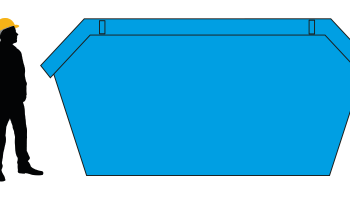
Incorporated Pest Management, otherwise called IPM, is a way to deal with bug control that coordinates the former administration practices and control techniques into one vermin the board program. A typical meaning of IPM is a comprehensively based technique that utilizes all reasonable control measures to decrease bother-related misfortunes to an OK level determined to regard hereditary variety and diminishing dangers to human wellbeing and climate. This is viewed as the public meaning of IPM and was created by the government Pest Management Alternatives Office. https://www.pestcontrolindia.com/ visit website for more understanding.

The fundamental IPM control measures are assembled in five primary classes:
1) Sanitary Controls. Essentially expressed, don’t give the nuisance a spot to raise or a method for spreading. You can achieve this in the accompanying ways:
- utilizing affirmed infection-free and clean seed and transfers.
- evaluating potato seed cautiously while cutting and disposing of dubious-looking tubers and seed pieces;
- annihilating plant garbage which can hold onto bugs (separate heaps, dropped the natural product, and so on) and plowing under or covering vegetable winnows;
- controlling vectors that can convey illness;
- controlling weeds in ditches, along streets and fencelines, and so forth; and,
- disinfecting soil and gear in nurseries (counting storerooms).
2) Cultural Controls. Take on developing strategies that beat bother foundation down. For instance:
- picking crop assortments or cultivars with normal protection from the vermin;
- pivoting between yields of various families to break the existing pattern of the pest, for example, rotate cole harvests, cabbage, or cauliflower with potatoes to help battle clubroot (at times, restricted land base confines the capacity to carry out a successful program of harvest turn).
- utilizing cover yields to give haven to the fundamental harvest to permit now is the ideal time to develop and vie for space, supplements, and dampness;
- utilizing trap yields to draw in the vermin away from the principal crop (bugs can then be destroyed in a more limited region with fewer pesticides and work);
- expanding plant and column separating to decrease covering thickness;
- intercropping by establishing a combination of harvests to lessen harm (know however that opposition might diminish yields);
- decreasing contamination problem areas to lessen the creation and spread of illness by packing and obliterating individual plants; and,
- following other great developing practices (appropriate composts, limestone, water system, and so forth) that fortify harvests, make them more impervious to harm by bugs and sicknesses and permit them to contend all the more effectively with weeds.
3) Mechanical Controls. Bugs can be kept out, disturbed, caught, or killed by mechanical or actual controls, for example,
! plowing and cutting of weeds;
! pruning and trellising (permits better air development and entrance of pesticides);
! introducing screens on nursery openings; and,
4) CultivationControls. Vermin can be constrained by utilizing hunters, parasites, and infections to assist with keeping irritations at the board levels. Adding regular adversaries in field circumstances has not produced boundless uses in the cultivation company in this territory primarily because they are not economically accessible. Normal foes, be that as it may, have been effectively utilized in a few nursery tasks.
5) Chemical Controls. Pesticides are exceptionally compelling when utilized accurately. In any case, they ought to possibly be utilized when important to limit the gamble to people and creatures, bother opposition, harm valuable life forms, leave a buildup on crops, and give a gamble to the climate (water, ground, and air defilement). Pesticides can be either particular.



